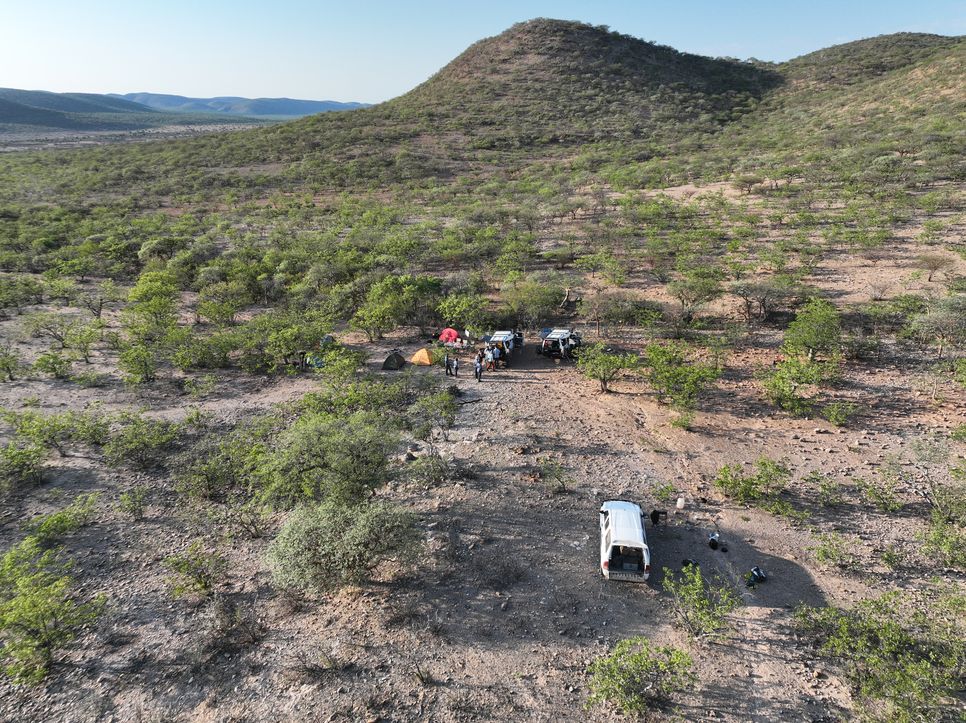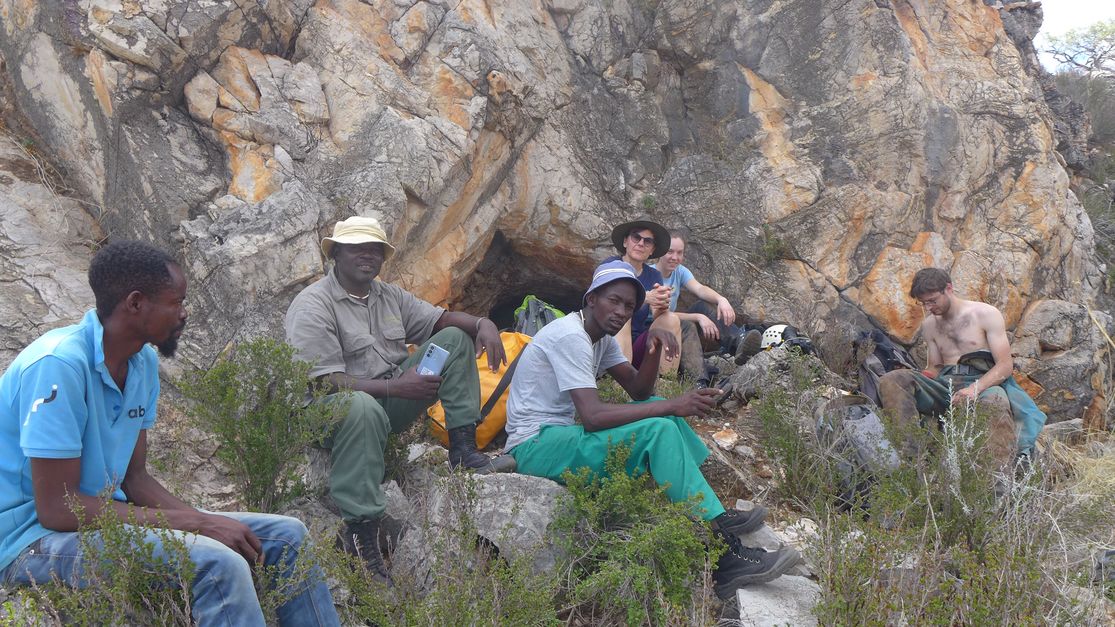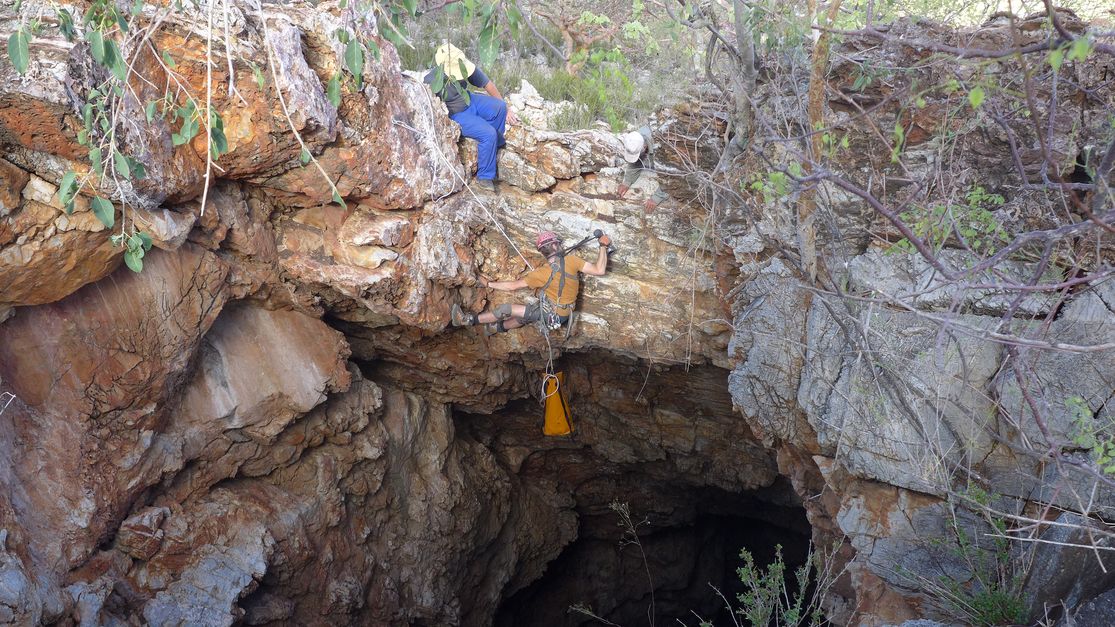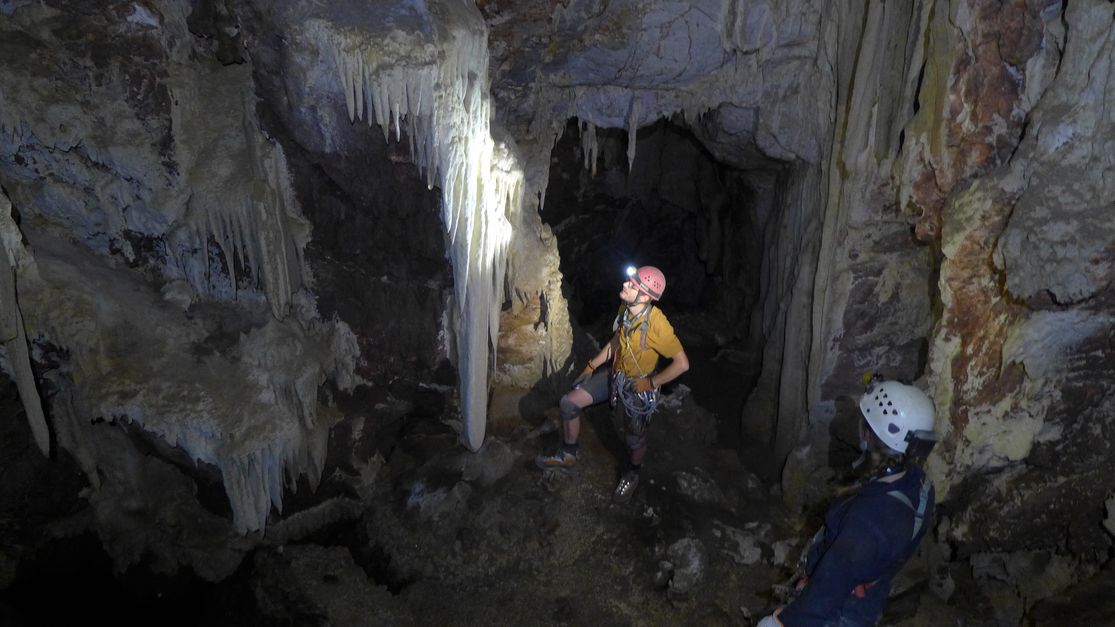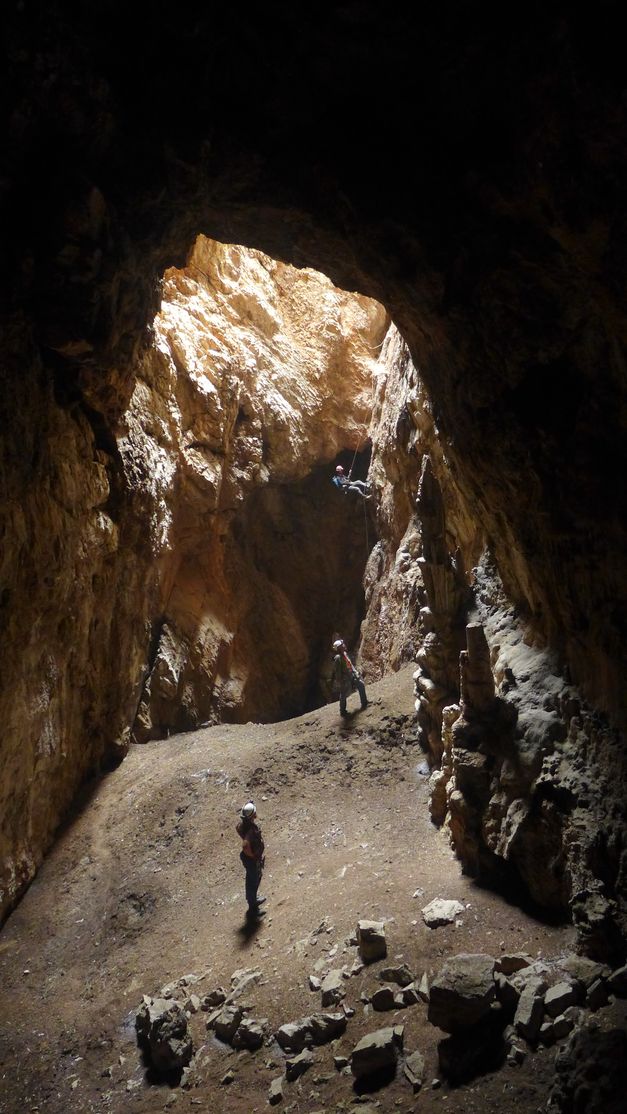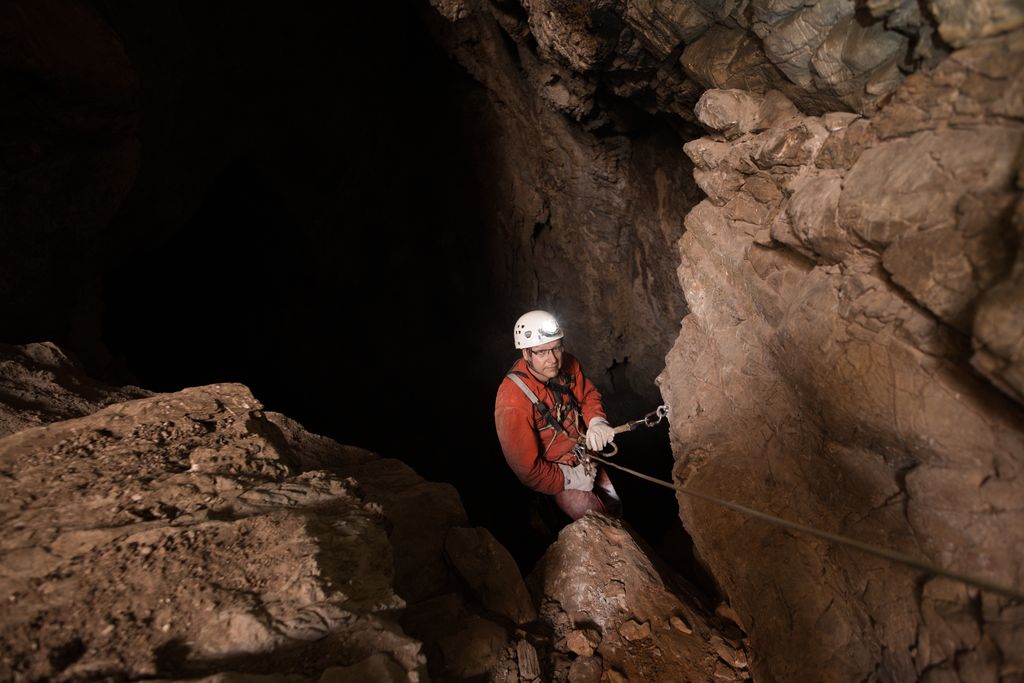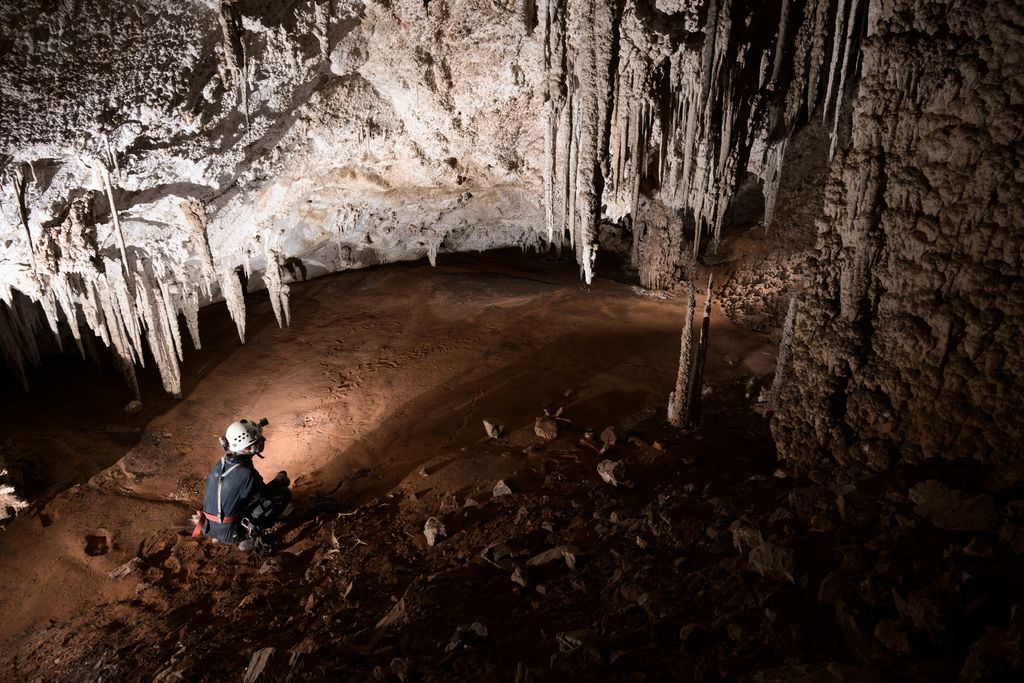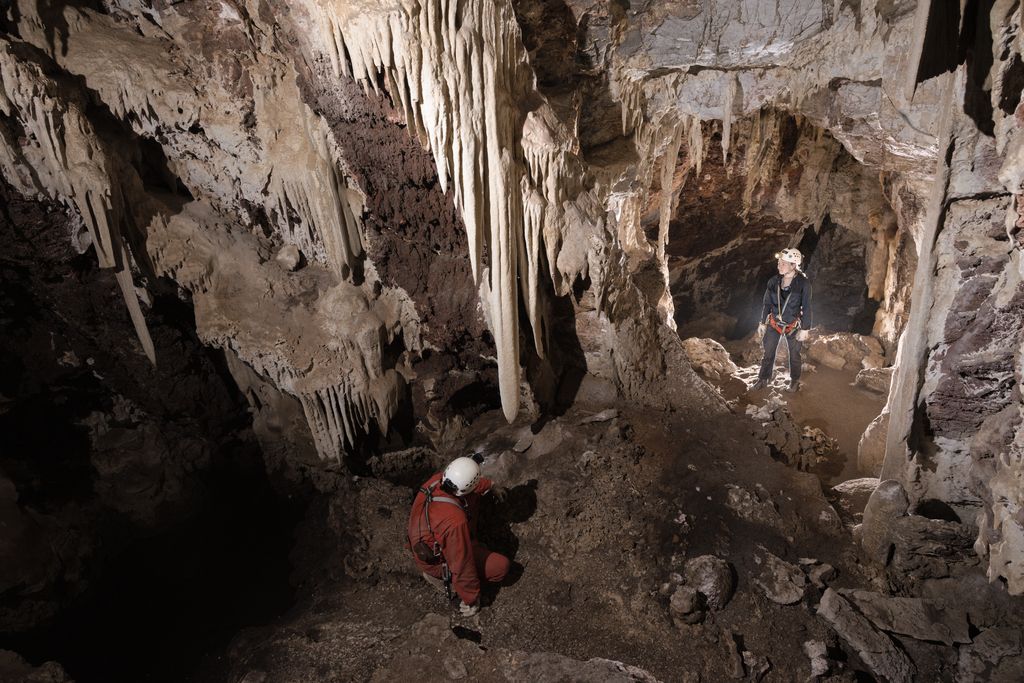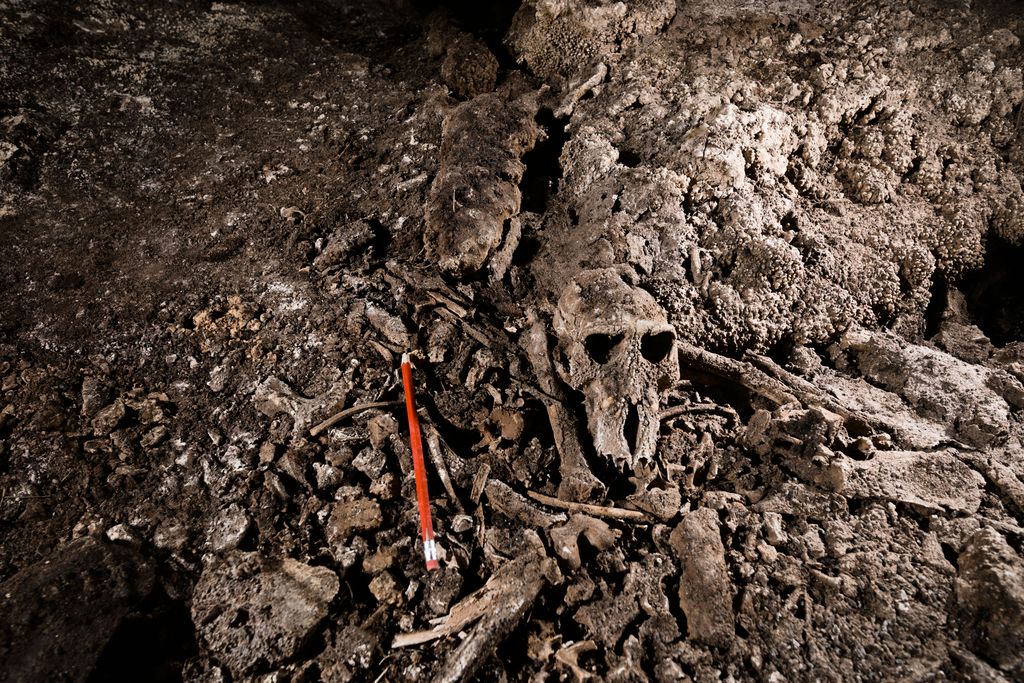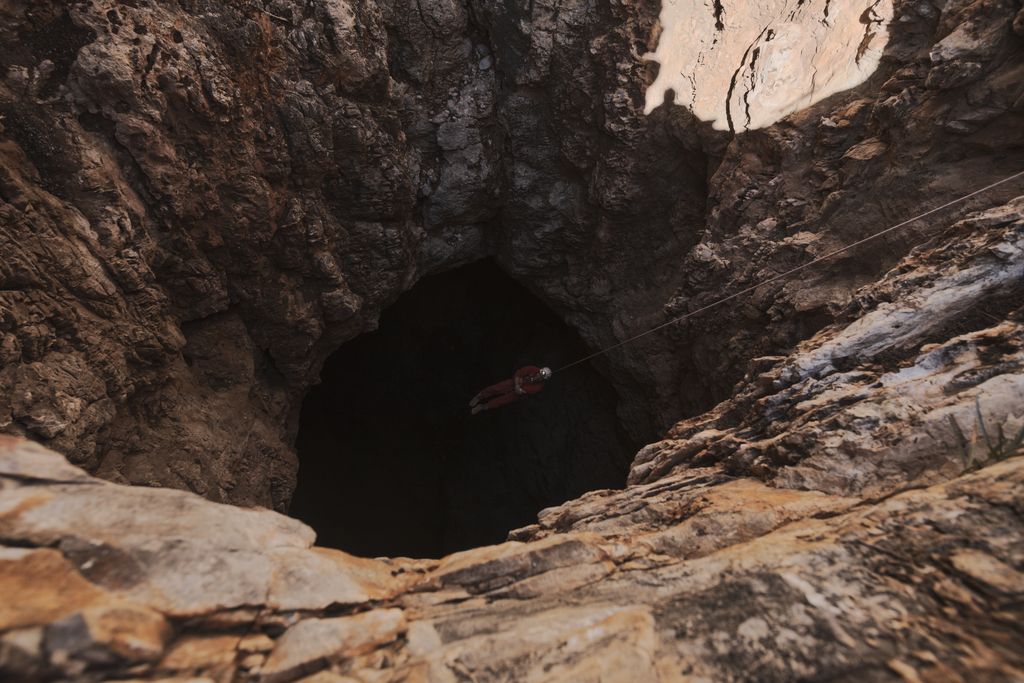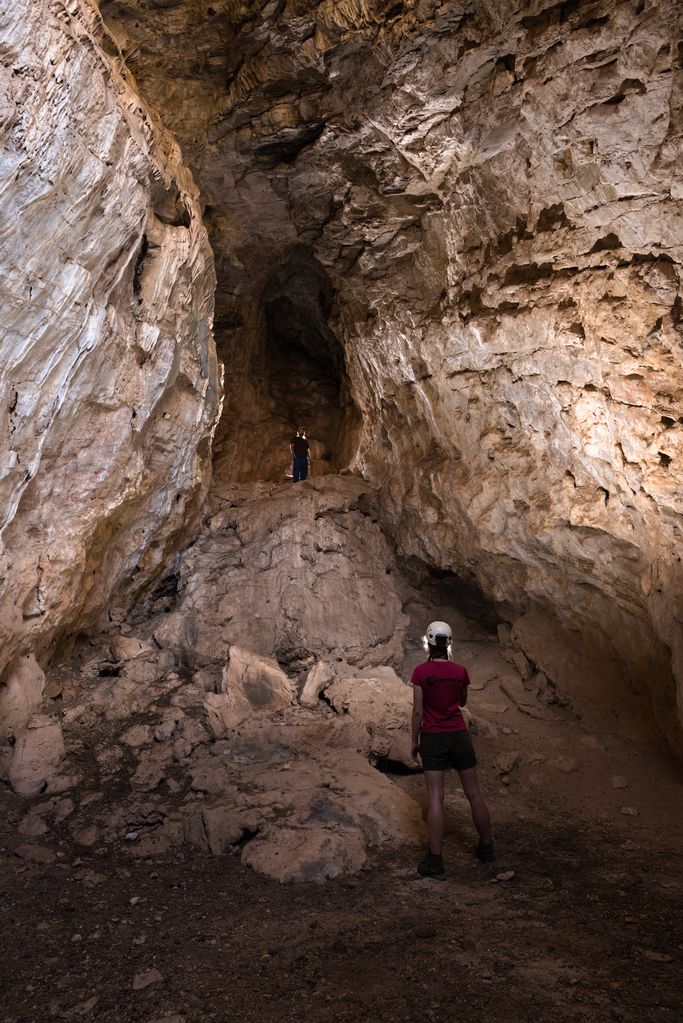Speleological Expedition Namibia 2023 Kaokoveld/Otavi
The Austrian caving club in Bad Mitterndorf (Verein für Höhlenkunde in Obersteier, VHO) in cooperation with the University of Innsbruck carried out a speleological expedition to Namibia from March 24th to April 12th 2023.
The expedition was supported by the Austrian Academy of Sciences (ÖAW), the Fédération de Spéléologie Européenne (F.S.E. – Europe), and Integrated Rural Development and Nature Conservation (IRDNC – Namibia).
Expedition Goals were twofold: 1.) the exploration of the Kaokoveld caves located from the air in 2018. Reaching the entrances and accurate orientation (most entrances are via longer 4×4 drives and extensive ascents). Exploring and measuring the caves (floor plan, elevation, photo documentation, etc.) and 2.) speleogenetic and palaeoclimate studies of the Namibian caves in Otavi including sampling in accordance with the permit issued by the National Commission on Research, Science and Technology of Namibia.
The group of 14 speleologists and geologists split into three teams. The first two teams carried out explorations within the Kaokoveld area while the third team focused on speleogenetic and palaeoclimate studies in caves of the Otavi Mountains.
Members of the teams came from six different nations: Heidrun André (Germany), Anna Brandmeier (Germany), Jutta Brandmeier (Germany), Yuri Dublyansky (Russia), Peter Jeutter (Germany), Gabriele Koltai (Hungary), Leonie Leitgeb (Austria), Ralf Langer (Germany), Tanguy Racine (France), Andre Schoeman (Namibia), Keyl Schoeman (Namibia), Christoph Spötl (Austria), Andrew Wolf (Germany), and Christine Wolf (Germany).
In the Kaokoveld area, the teams targeted caves located through an aerial reconnaissance mission carried out by plane in 2018. The area is rather difficult to access and a major part of the endeavor was scouting the best way to access the cave entrances.
The majority of entrances (some very large) are located on remote terrain, whose access required time and material consuming off-road driving as well as exhausting hikes under the African sun.
In total 14 caves where explored and surveyed. The largest of them, Omuhako Cave, yielded a total length of 505m and a depth of 54m. To our knowledge Omuhako Cave is the largest cave known in Kaokoveld to date. Altogether, the teams surveyed cave length of more than 1400m.
Out of the 26 potential caves initially spotted from the air, the teams could access, explore and survey five. Several of them lived up to the expectation of their entrance dimensions, like Starlingshaft with its gaping 57 m entrance shaft, for a total depth of 68 m; or Three Guardians Cave, a huge entrance leading directly into a 27 m shaft, high side passages and a total depth of 47 m. Two of the entrances recorded during the aerial survey were visited by drone but on balance of their less promising potential and remoteness, they were not pursued any further.
Only 12 out of the 26 spotted entrances could be located accurately enough to make an approach worthwhile. The use of a drone enabled more accurate positioning and allowed the discovery of an additional large entrance.
For two rather promising but hard-to-access entrances the exact location was confirmed by the drone. Their eventual exploration requires logistical planning for a three day hike involving donkeys to ensure adequate water supply. These and some additional entrances in the north remain speleological targets.
Other un-surveyed caves where found during the course of the expedition; notably the Parrot/Portal caves with a combined length of 180m and large entrance portals.
The science team studied and sampled several caves in the Otavi Mountains, under permit RPIV011282022 issued by the National Commission on Research, Science and Technology of Namibia. The team confirmed the hypogene origin of these caves based on cave-morphological observations and performed detailed studies of the complex sediment fill which comprises several generations of clastic sediment infill, erosion phases and multiple speleothem generations. Samples for radiometric and palaeomagnetic dating were obtained and temperature loggers were deployed to monitor the modern cave microclimate.
Cooperation between the international team and the Namibian members included training in caving techniques and cave surveying. Caves discovered in tribal rural areas may help to provide a future eco-touristic perspective for the formerly nomadic Ovahimba and Herero people.
It is planned to publish the results of the expedition in due course within the VHO publications as a special edition bilingual in German and English. This will include all cave surveys, the expedition diary, photos and a selection of the scientific results.
We would like to express our special thanks to ÖAW, F.S.E., University of Innsbruck, IRDNC, Korda‘s, Bergwacht Bayern (Oberau/Murnau), Andrè Schoeman, Eckart Basson, Roger Collison and Muhaamberua Virere.

